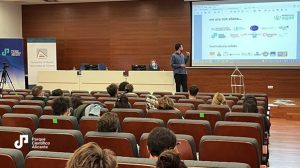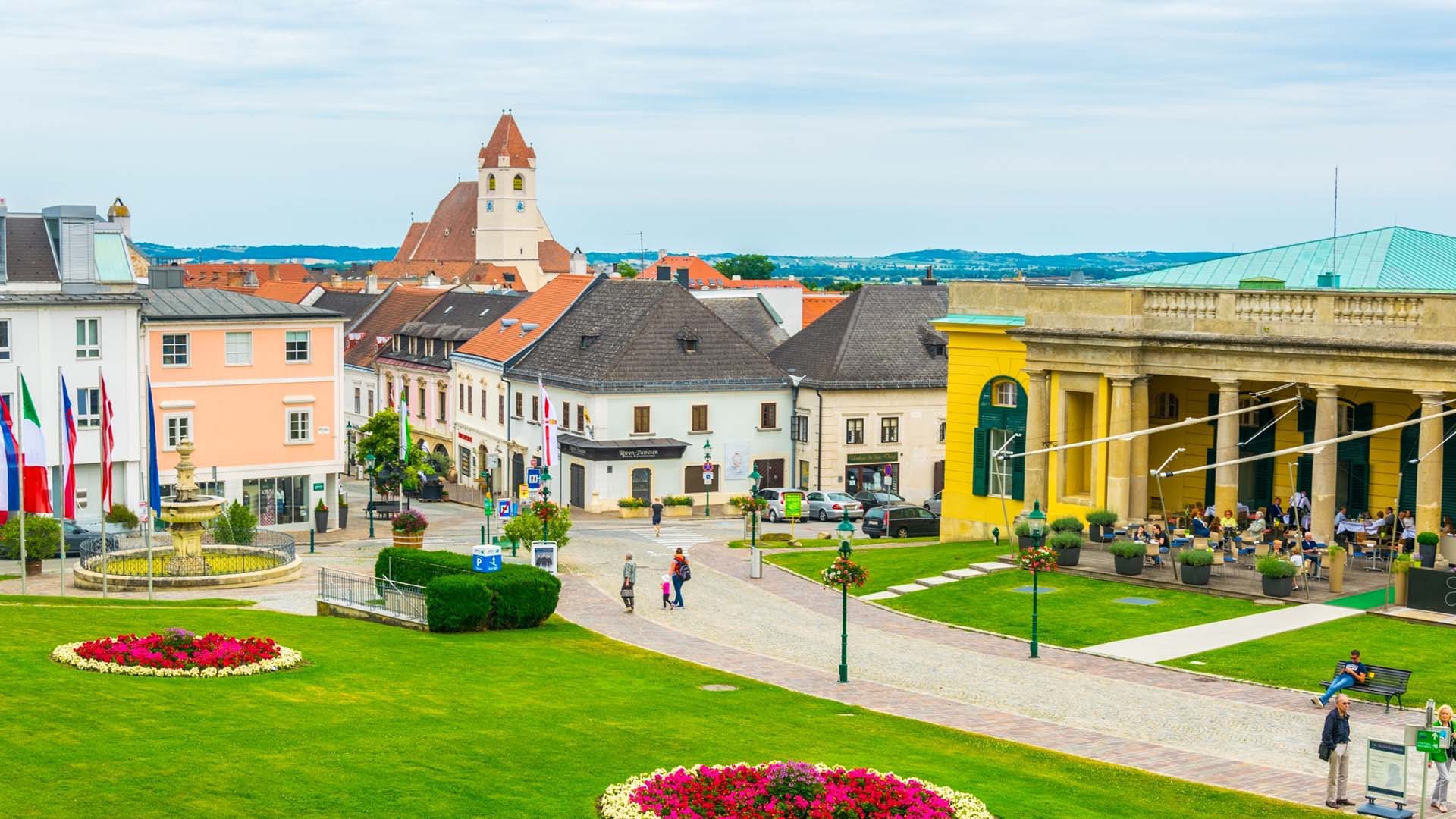Building innovation capacity by using data
In this article, we are putting the spotlight on CloudEARTHi – one of the pilot projects funded by the EIT HEI Initiative in 2021. Project Lead Tamer Abu-Alam shares with the community what the project’s aims and challenges have been so far, as well as a few inspiring success stories.
Could you tell us a bit about yourself and your role in the project?
My name is Tamer Abu-Alam, I am an academic working at UiT The Arctic University of Norway. I am also the project lead of the CloudEARTHi project. I believe that higher education institutions are society’s engine to move towards sustainable goals, such as net-zero and green transition, equality, and inclusion of underrepresented groups.
Could you briefly tell us about the aim of your project?
CloudEARTHi aims to build innovation capacity by using big data in environmental sciences, sustainability, and circular economy in higher education institutions and their entrepreneurial ecosystems. This subject area is a key strength of our consortium and is essential for society to understand, adapt to, and mitigate against the climate crisis and wider sustainability issues.
The project uses the EIT knowledge triangle model to build innovation capacity. It supports knowledge-based and data-driven integration of research institutes and businesses to advance the use of big data in the subject area through a multidisciplinary approach. CloudEARTHi aims to make higher education institutions engines of impact to lead society in the net-zero transition and support innovation in sustainability.
How did the idea of the project come to be?
As a researcher, I can see how the negative impacts of climate change are becoming evident at a fast rate. They cause loss of biodiversity, changes in weather patterns, rising sea levels, and more. The circular economy is a way to stop the dramatic consumption of resources and reduce carbon emissions, which will lead to a net-zero society and preserve resources for the next generations. On the other hand, to understand how all these factors and parameters are affecting and interacting with each other, we need to analyse an enormous amount of data − big data. That’s why I decided to focus on the area of big data to help society overcome many of today’s challenges.
I was working on another project funded by the UiT The Arctic University of Norway to establish a platform that analyses data related to Earth and environmental sciences. While working on the project, I understood that one platform analysing big data was not enough to solve all climate change issues. I realised that we needed to build innovation capacity by using big data in environmental sciences, sustainability and circular economy across higher education institutions and their ecosystems. And that’s where CloudEARTHi comes in.
How has your experience with the EIT HEI Initiative been so far?
I am proud to be part of the EIT HEI initiative. Whenever I feel overwhelmed by work, I remember that I am part of a larger team that is working to raise the bar of higher education at the EU level, and I get motivated again.
I think the EIT HEI initiative is the most important action to unlock the potential of higher education institutions not only at the European level but worldwide.
My motivation to contribute to the initiative goes beyond its vision and aims. I think the EIT HEI Initiative has the potential to be transferred to developing countries at a later stage to propel global change.
Why did you select these specific partners for your consortium?
The CloudEARTHi consortium is special. We share the same ideas, vision and motivation, and we are working in unique harmony. Thanks to this chemistry between the consortium members, we have several other projects in the pipeline as well.
The CloudEARTHi consortium features institutes with a high profile in artificial intelligence and big data. We have partners with several years of experience in dealing with environmental issues related to sustainability, circular economy, green transition and net-zero transition. We also have institutes that are well connected with the business sector and different non-governmental organisations.
The CloudEARTHi consortium represents the knowledge triangle, which secures maximum impact. Our consortium benefits from high-level institutional commitment to improving innovation activities, as well as an impressive track record in building academia−industry partnerships, nurturing student and academic entrepreneurship, and delivering world-leading education and teaching.
What have been the main achievements of your project to date?
So far, we have achieved many of our targets.
Thanks to several workshops and activities in the first phase of the project, we have had a good number of academics engaged with CloudEARTHi. In the current phase (phase two), we will have interdisciplinary courses taught by academic staff based at different universities. I consider that an achievement, as one of our targets is to increase academics’ awareness of societal challenges and how they can be solved collaboratively.
We have also had an unexpectedly high number of students attending our training programme − more than 219!
So far, we have been able to attract women and students from underrepresented groups to our programme. The ratio between women and men is 49:51. We hope that this good gender balance will continue in phase two.
What is the biggest challenge that the consortium has had to overcome so far?
The biggest challenge has been engaging non-academic staff to join our programmes. We’ve had to actively reach out to non-academic staff and explain why and how CloudEARTHi can promote change in the academic system. Currently, our partners are working on bilateral Erasmus+ agreements which allow staff to take advantage of two-week mobility and training programmes in our consortium’s institutes. We have used this to motivate non-academic staff to engage with the programme.
Have you already held any online or offline events?
We had an online workshop called Teach for Our Future, where the academic staff from our partners were invited to participate and present how business skills can be incorporated into academia. The event was a great success. In total, we reached around 25 academic staff from all consortium partners.
What can the EIT HEI Initiative community expect from your project in the coming months?
We expect to train more students, academic and non-academic staff through our activities.
We also expect the CloudEARTHi Digital Hub to be launched in March 2022. The CloudEARTHi Digital Hub will be the platform where members of the innovation knowledge triangle (academia, business, and non-governmental organisations) meet and connect to help build a knowledge-based society.
Something else to look forward to is CloudEARTHc – the CloudEARTH Conference Series. This will be the project’s main communication channel with our various local entrepreneurial ecosystems. Through CloudEARTHc, we hope to transfer the project’s spirit and ideas to other higher education institutions and maximise the impact, build new connections, and share knowledge. Our next conference will take place on 18 and 19 May 2022 at the University of Applied Sciences Burgenland in Eisenstadt, Austria.
Another project that we’re working on is TAIS, Twinning for AI Society in a Sustainable Environment. The project aims to build capacity to use artificial intelligence in order to understand our environment. It is considered a step forward from the CloudEARTHi and will strengthen the partnership between UiT The Arctic University of Norway and the Technical University of Varna, Bulgaria.

Could you tell us more about the project Inspiring the Minds?
Inspiring the Minds is a proposal for an Erasmus+ project. The project will run for three years, during which we hope to develop courses and learning activities that aim to include underrepresented social groups. Our aim is to grow and spread knowledge related to making Europe more inclusive.
What have been your favourite memories from the project so far?
My favourite moment so far has been the month that I spent writing the CloudEARTHi proposal. It was a stressful period, but when I look back at that moment of my life, I find that I enjoyed it. That month led to a successful project which now allows brilliant minds to share ideas. Looking back, I think that month will go down in history as the month that led to a big change in the academic system towards a more sustainable and inclusive society.
Are there any success stories that you would like to share with us?
We have had several success stories from project participants.
One of our students came up with a business idea to sell refurbished computer components. The idea was rough but solid enough to be improved through the different CloudEARTHi training programmes. During a two-month training, the student was able to improve and fine-tune his business model, and on 15 November 2021 he successfully registered his company. The CloudEARTHi team has stayed in touch with him to offer advice and help. We are also considering inviting this start-up to join the CloudEARTHi acceleration programme.
Another example is from two academic leaders − directors of education programmes at the University of Applied Sciences Burgenland. They found that the teaching materials of the CloudEARTHi course filled a gap in the curricula of their bachelor’s programmes. As a result, our team was invited to embed the student course in the existing education programme. After a trial in the first phase of the project, both programme directors decided to incorporate the course framework into their re-accreditation process. The course will become part of the curricula as of the fall semester 2022. This success underlines the core aim of CloudEARTHi, which is to increase the innovation capacity of higher education institutions by developing and changing existing curricula and education programmes.
A third success story is from UiT The Arctic University of Norway, where we succeeded in grabbing the attention of academic staff through our activities. As a result, we designed six new interdisciplinary courses covering a wide range of subjects. Some of these courses will be taught in the next semester as pilot courses. The interdisciplinary courses are a way to unlock the potential of higher education institutions to be the engines driving society toward inclusion.
Since March 2022, the CloudEARTHi team has received three more requests for start-up guidance from students who attended our teaching and training programmes. Two of these business ideas will contribute directly to the European Green Deal, while the third idea aims to create a start-up that helps our society be more diverse and inclusive.
All in all, the CloudEARTHi project has had tangible impact in terms of actual start-ups and encouraging entrepreneurship among students, who otherwise would not have dared to take their business ideas further.
Visit the CloudEARTHi website to learn more about this project. You can find more projects funded by the EIT HEI Initiative in the Projects section.
Share your experience with the EIT HEI Initiative and inspire higher education institutions across Europe to boost their innovation and entrepreneurship capacity.
Publication: 2 November 2022

